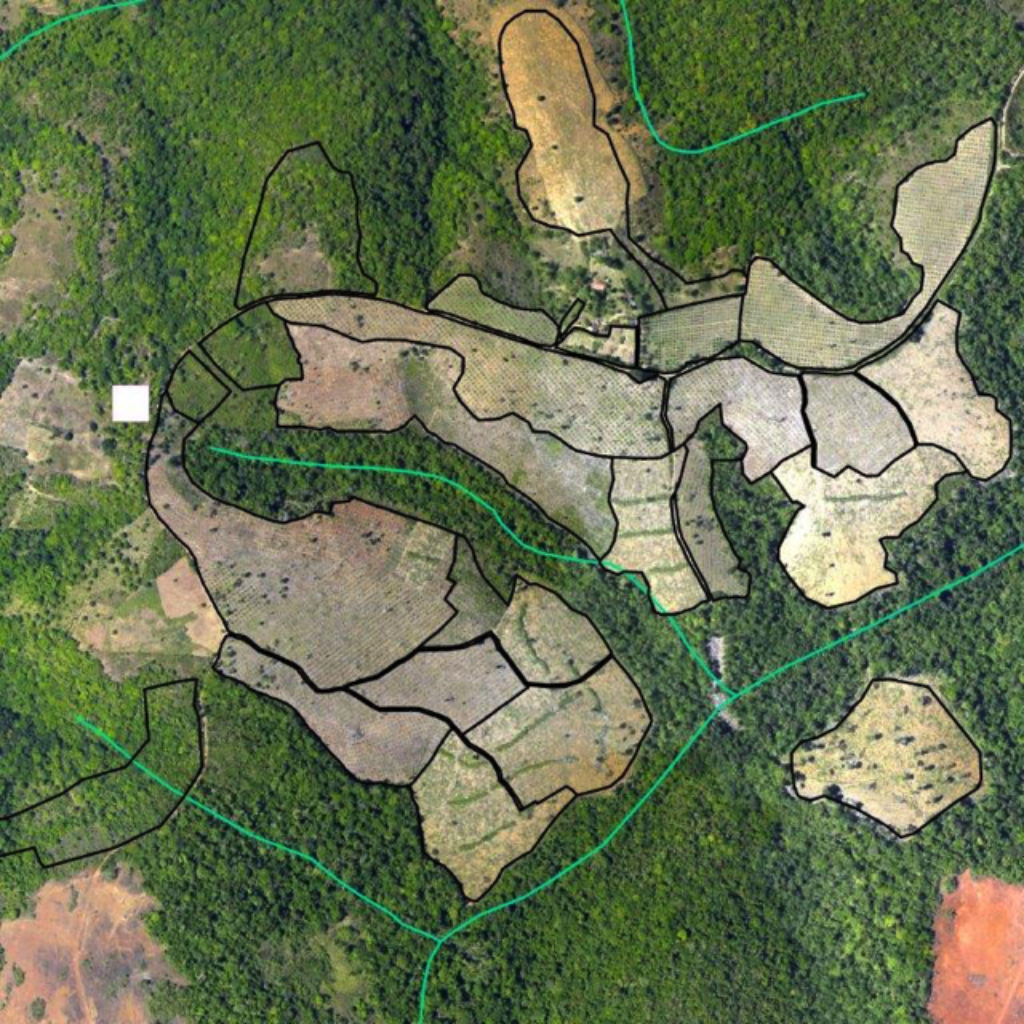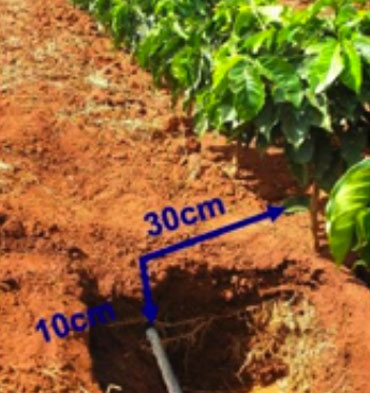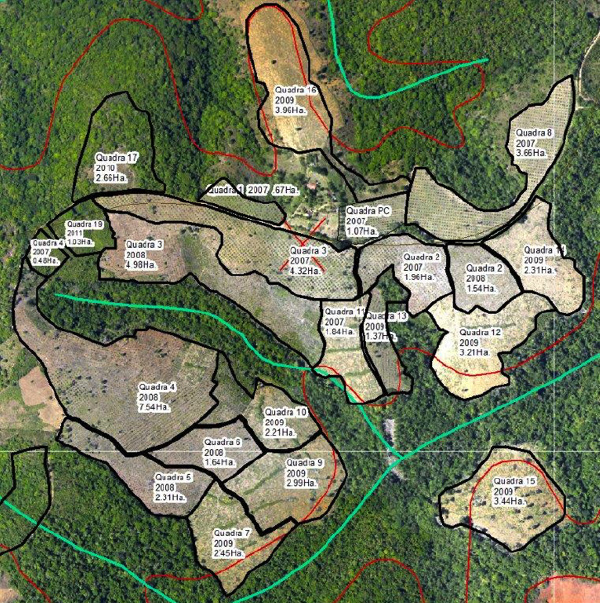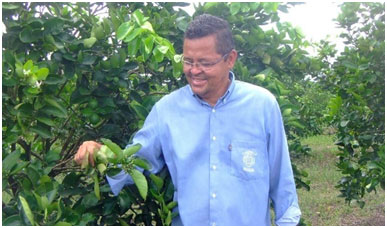
Located on a plateau of nearly 250 acres, the Peralba Italy is divided into numerous blocks (quadras), and reflects the initial trial and error planting of this crop.

Correction pruning In 2015 we began a program of apical and low branches, skirts, pruning of the most bushy trees. We intend to continue this process carefully in 2016, when time permits and where it is most desirable. In 2017, pruning will extend to the entire orchard, and thus increase the number of fruiting branches per tree. The expectation is that in 2016 will a small drop in production will occur but in 2017 this part of the farm will increase your productivity at least between 20% to 30%, only by this agricultural practice… according to our international consultant Theodorus Antonius Johannes Daamen, (Theo).

One aspect that is rarely considered in crops of this type is replanting of dead or low yield trees. For us this is a vital element that will determine our long-term survival, well after the 2021!

Easy-access internal roads cross this part of the plantation, making it easy to deliver the production to the packinghouse.
With trees already with an eight year life span, we achieved productivity per hectare of up to 30 tons.

Expand the present emergency irrigation to become a full-fledged ferti-irrigation project. There islittle experience in the use of this technique applied to limes in Brazil, but our consultants believe in its effectiveness. That includes our General Manager, o SeuWilson, who with 40 years of experience in growing limes concluded that the adoption of this technique could transform the management of plantations and substantially increase our productivity. Such benefits though will be derivedfor a small part by protecting the plantation from such events as 2012 (as the trees did fare well in such an occasion in 2012, but prudence is never enough), and for another small part from any dramatic increase of productivity per tree (as the trees are already in full production). The real benefits will come by extending the production period from the actual 9 to 10 months to 10/11 months, and, mainly, by increasing the productivity of the beginning and ending months, January/February and October/November

We also had to take care to maintain and improve those levels substantially: in 2015 we increased productivity from 33.2 tons per hectare to over 40 tons per hectare in 2016.
How do we intend to achieve such a feat? With improvements in plantation management, careful additions to infrastructure and better management of the field:

Electronic instruments. With the return of ourpartner, the agronomist Dr. Paulo Reis, it becomes appropriate to reintroduce computing methods that were put aside when the imperative of expanding at any cost was adopted. We will develop and introduce precision farming techniques with drones, weather stations, WAN links between field and packing, automated detection of pests, and adoption of production control system in the clouds.
We also had to take care to maintain and improve those levels substantially: in 2015 we increased productivity from 33.2 tons per hectare to over 40 tons per hectare in 2016.

Over the years, plants die and leave ‘ holes ‘ in the orchard that become expensive when you consider the waste of expensive products in sprays of dead plants, or dying trees or already eradicated leaving gaps in the lines. The experience indicates that between 3% to 5% of the plants that go beyond the 6 years of life are dying of natural causes. This is normal, expected, studied, researched … but rarely considered in plans and on the value of a field.
With a vision greater than 15 years, since 2013 we will engage in a structured program of replanting.
This is a constant process of replacing trees with new seedlings selected: for example, only in 2013 4800 seedlings planted with a density of 7 m x 2 m, or 6.42% of the total area, almost exclusively in the Peralba Italy. This is due mainly to the initial form of planting, when we set seedlings in 40 cm holes dug by bulldozer. Our ignorance, because at the time this was the traditional way of lime plantations.
With the advent of our General Manager, o Seu Wilson, our knowledge of how how to plant limes has changed profoundly, and in 2015,we replanted 6000 seedlings with a density of 7 m x 2 m, or 4.78% of the total of limes plants. With the new plantation ofPeralbaSucupira, we can reduce replanting to a maximum of 3,000 to 3,500 per year, but we will see what the future will give.


.jpg)
.jpg)
.jpg)
.jpg)
.jpg)
.jpg)
.jpg)
.jpg)
.jpg)
.jpg)
.jpg)
.jpg)
.jpg)
.jpg)
.jpg)
.jpg)
.jpg)
.jpg)
.jpg)
.jpg)